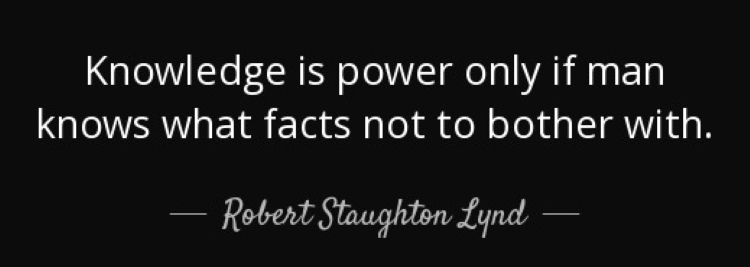
Reading Strategies – Background Knowledge is Key
Effective teachers will often introduce reading by asking questions to students about what they may already know or ask them to make a personal connection to the reading at hand. Classroom teachers will also “pre-teach” or lecture to a topic before assigning a more in-depth reading of the topic at hand because even a little bit of prior knowledge helps with comprehension and understanding (Vitale, Romance, 2007). Teachers seem to instinctively know this but I am worried with the current trend or mistaken belief that students don’t need to know anything that can be “Googled”. If my perception is true, that the instruction of background knowledge is being replaced by specific, personalized inquiry, then the message that is then seemingly being sent to students is that; “Why bother to read anything of substance in areas such as Science or History that doesn’t relate to you specifically at that particular moment in time?” Ironically, most teachers that are following this trend will also admit that making connections to what a reader already knows is one of the key components of effective reading strategies. Lemov echo’s this idea when he states that: “…that reading comprehension, deep thinking, and even creativity all rely heavily on prior knowledge.” (Lemov, 2017).
Reading as a Culture
Reading as a culture of the public school experience has been changing due to the increased use of online text. The BC Grade 10 Literacy assessment acknowledges this change in reading styles when in its exam description, it provides examples as to what students will be exposed to on the assessment; a list that includes; “… blogs, infographics, newspaper or magazine articles, social media feeds, and stories”. (BC Gr. 10 Lit. Assess). This in of itself can be viewed as troubling because it seems to be promoting the idea that purely non-fiction text or factual knowledge is perhaps too cumbersome and should instead be watered down or filtered by others, who may not have credentials or may in fact experience “filter bubbles” or “echo-chambers” resulting in information coming from questionable sources. Critical, non-fiction reading based on “truthful knowledge” is being replaced by whomever can produce the “viral video” of the moment. Reading (non-fiction in particular) as a culture is being threaten by streaming videos because it is passive and effortless, whereas effective reading requires effort and practice.
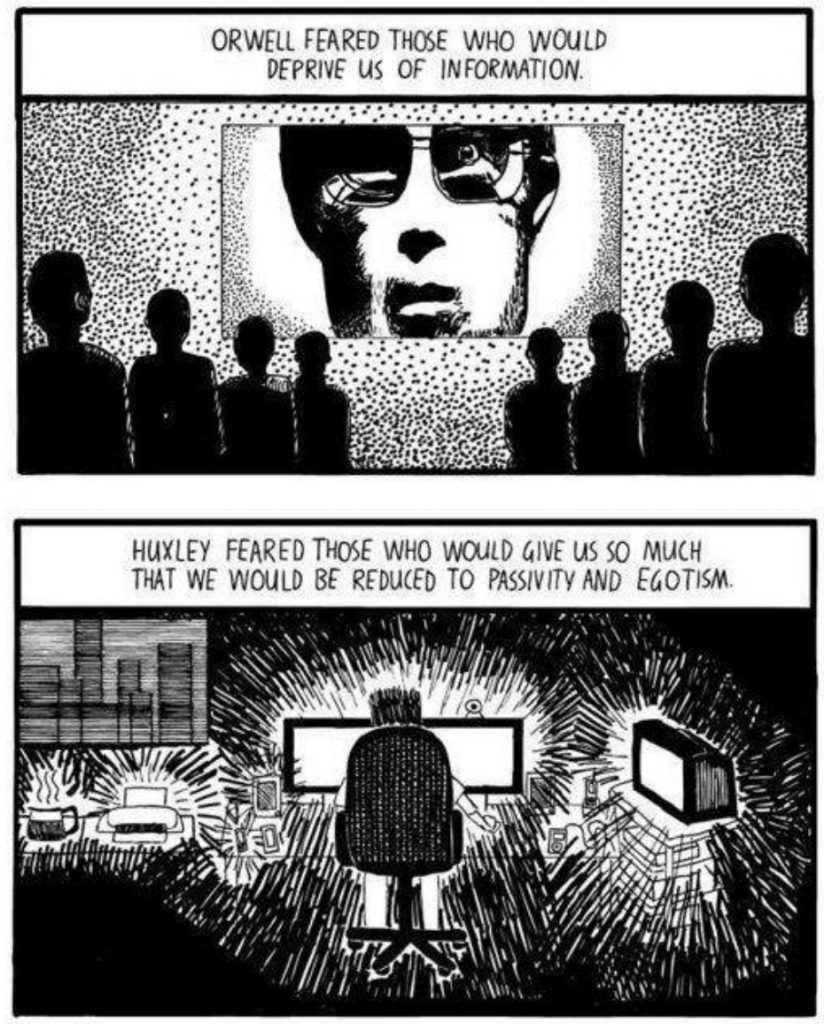
Non-Fiction Reading is Being Replaced
It is my experience that High School libraries are trending away from collections of non-fiction resources in favour of fiction out of a realization that cost restraints are too limiting. Easy (and cheap) access to online non-fiction is fast replacing the non-fiction resources that a library may used to have. Riedling, Shake and Huston in their book Reference Skills for the School Librarian note that print encyclopedias, textbooks and any non-fiction works related to science or technology have a shelf life of 5 years before they are out of date (social sciences seemingly fare better with a 10 year life cycle), (Riedling, Shake and Huston, 2013) and so librarians (not surprisingly) are choosing to allocate funds towards popular fiction in order to encourage reading as an entertaining, pastime culture, rather than invest largely into periodicals that are so quickly being called out-of-date.
There is nothing wrong with promoting recreational reading. However, public schools have to promote both fiction and non-fiction reading. Unfortunately, because more and more non-fiction reading is being pushed towards online resources, there exists the danger of “rabbit-hole” narratives within an almost limitless amount of online “disinformation”. Many of these sources of “information” may be misleading and in some cases outright lies, but catch online attention due to the promotion of non-literate attractions such as video and simple infographics.
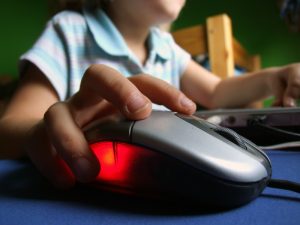
I have personally noticed a change in student pre-dispositions to immediately reach for the internet for non-fiction research. As a classroom teacher I can assemble as many high-interest, age appropriate non-fiction books for a class inquiry project and almost every student will ignore the books in favour of the chance to go online. The danger is that with all of the disinformation that is available, often as the result of social media and search engine algorithms, the student choice to go “online” is often inefficient and ineffective.
Reading as a Transfer of Knowledge
For myself, I find that students who choose to read non-fiction online do not take away as much knowledge or understanding as they do when asked to read from paper. Online reading is a different experience that tends to be as individual as it is multi-dimensional (as acknowledge by the BC Ministry of Ed. with its emphasis on assessing blogs, infographics, social media feeds, etc..) and often kids are instead often drawn to Youtube videos or any form of imbedded videos that can be found attached to numerous non-fiction websites. I find that students are quick to scroll for infographics or videos in order to avoid reading online. It is as if, for non-fiction online, reading is an obstacle to avoid.
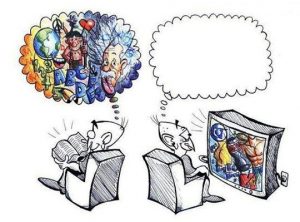
Reading is the quickest and easiest way of transferring knowledge of any real depth, but it does lack the ease and appeal of infographics and videos. Instead of catering to this idea of trying to compete with 30 second “Tik-Tok” transmission of knowledge, public schools should be encouraging more non-fiction reading in the classroom. If the goal of public education is to provide students with the necessary background knowledge so that they can truly become critical and creative thinkers, then schools must not try to compete with well-funded, high production valued online “infomercials” and instead promote the idea that knowledge is not only important, but it is an effort based endevour that can be made easier by teacher assistance, but cannot be replaced without the process of effortful reading on their own.
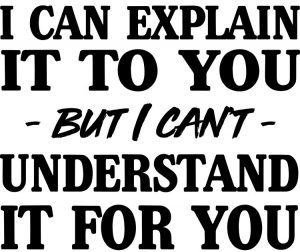
Works Cited
BC Grade 10 Literacy Assessment, https://curriculum.gov.bc.ca/assessment/literacy-assessment/grade-10-literacy-assessment
Friesen, Norm, and Shannon Lowe. “The questionable promise of social media for education: Connective learning and the commercial imperative.” Journal of Computer Assisted Learning 28.3 (2012): 183-194.
Froehlich, Thomas Joseph. “Ten Lessons for the Age of Disinformation.” Navigating Fake News, Alternative Facts, and Misinformation in a Post-Truth World. IGI Global, 2020. 36-88.
Lemov, Doug, “How Knowledge Powers Reading”, Educational Leadership, (http://www.ascd.org/publications/educational-leadership/feb17/vol74/num05/How-Knowledge-Powers-Reading.aspx ) (2017)
Youtube Links
Beware online “filter bubbles” | Eli Pariser, https://www.youtube.com/watch?v=B8ofWFx525s
In A Divided Country, Echo Chambers Can Reinforce Polarized Opinions | TODAY, https://www.youtube.com/watch?v=I98jjGlg6tU
Bill, I appreciate your thoughtful post that examines the role of nonfiction in the school library. I must confess that I am guilty of reducing much of my nonfiction titles to create space for collaboration and more fiction (which like you mentioned, results in greater circulation). Like you, I also experience students relying on the internet for research as opposed to books, books specifically purchased with accessibility in mind. Some teachers have required students to use at least one book resource in their assignment instruction – this generally helps direct them to the collection in the library, but again, it’s not a default approach. Just today, I discovered that the grade 8s have no idea what an encyclopedia is.
A colleague of mine introduced me to the idea of lateral reading, a skill that helps students fact-check the credibility of websites and evaluate the sources they are accessing online (https://cor.stanford.edu/). Definitely interesting food for thought, as your blog post very successfully does.
You share important ideas and resources in this post and leave your reader with a lot to consider. Have you ever had your students create infographics? I found it to be a very valuable experience. Students have to analyze and synthesize information from several sources and pare down their research. They also have to evaluate information, make decisions on what to include, and consider alternate ways to communicate the information (icons, maps, charts, tables). The process of making an infographic gave my students some of the background knowledge they needed to discern a good infographic from a weak one. Happy to share some student samples and templates if you are interested.